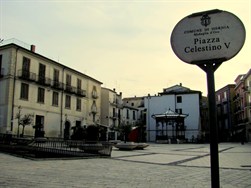Isernia
 Situated in the current region of Molise, and the capital of the province, Isernia is a city of modest size and population, but it has a long history. The first settlements in the area date back to the Paleolithic era, even though there is no certain news of the town prior to the fifth century B.C, when Isernia was already under the dominion of the Samnites. Conquered by the Romans in the third century and remaining a Roman possession until the fall of the Western Empire, Isernia was repeatedly destroyed by vandals and the Saracens. Over the centuries it went through flourishing periods under the Lombards and during the reign of Emperor Frederick II. In the Early Modern period it was part, as all of Molise, of the Kingdom of Naples. At the end of the eighteenth century, Isernia strenuously resisted the invading French troops, as opposed to the Piedmontese in 1860. In October of the same year, the first king of Italy, Vittorio Emanuele II, stayed for a night in the town, along the road that would take him to the meeting of Teano with Giuseppe Garibaldi.
Situated in the current region of Molise, and the capital of the province, Isernia is a city of modest size and population, but it has a long history. The first settlements in the area date back to the Paleolithic era, even though there is no certain news of the town prior to the fifth century B.C, when Isernia was already under the dominion of the Samnites. Conquered by the Romans in the third century and remaining a Roman possession until the fall of the Western Empire, Isernia was repeatedly destroyed by vandals and the Saracens. Over the centuries it went through flourishing periods under the Lombards and during the reign of Emperor Frederick II. In the Early Modern period it was part, as all of Molise, of the Kingdom of Naples. At the end of the eighteenth century, Isernia strenuously resisted the invading French troops, as opposed to the Piedmontese in 1860. In October of the same year, the first king of Italy, Vittorio Emanuele II, stayed for a night in the town, along the road that would take him to the meeting of Teano with Giuseppe Garibaldi.
